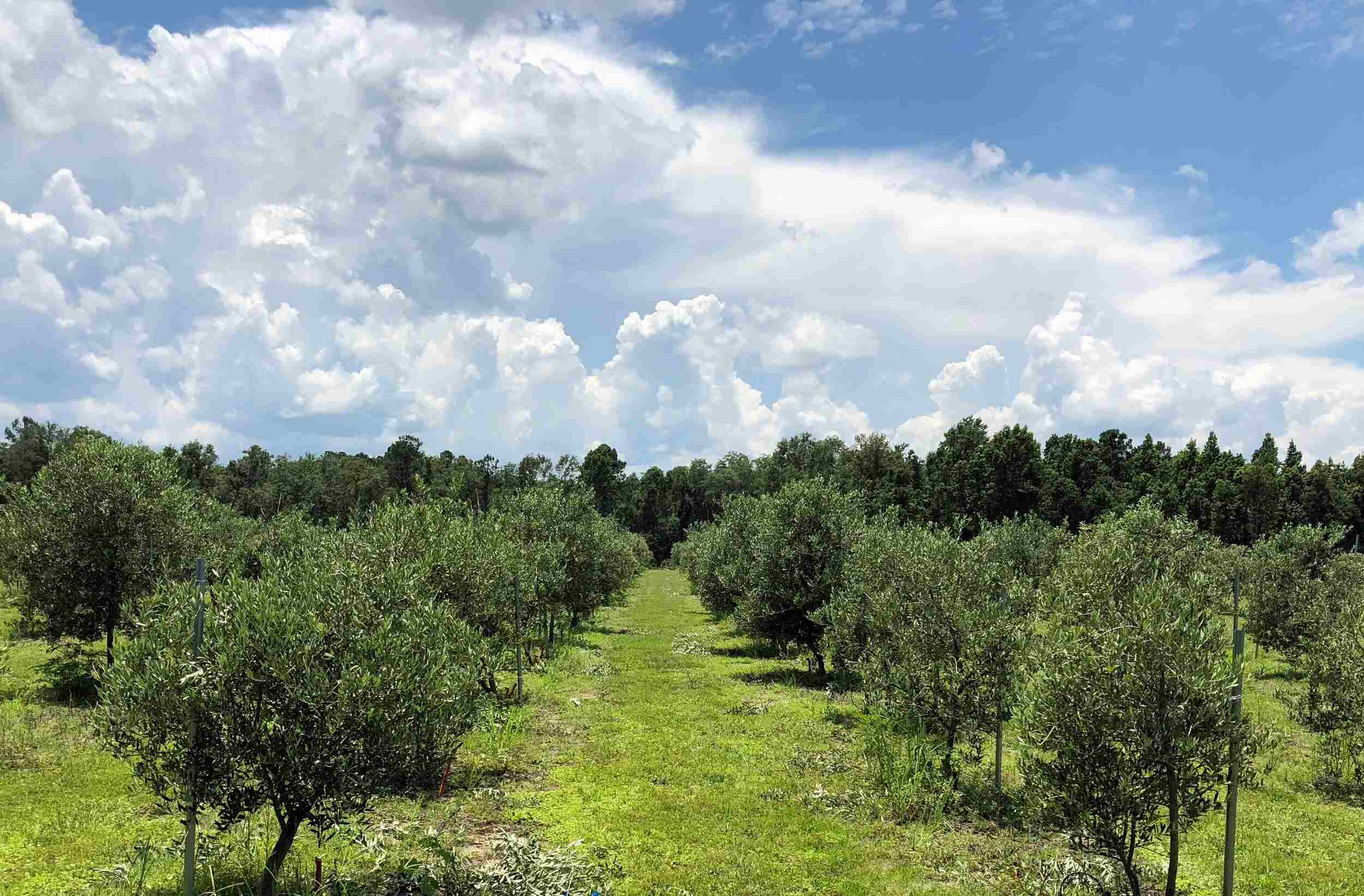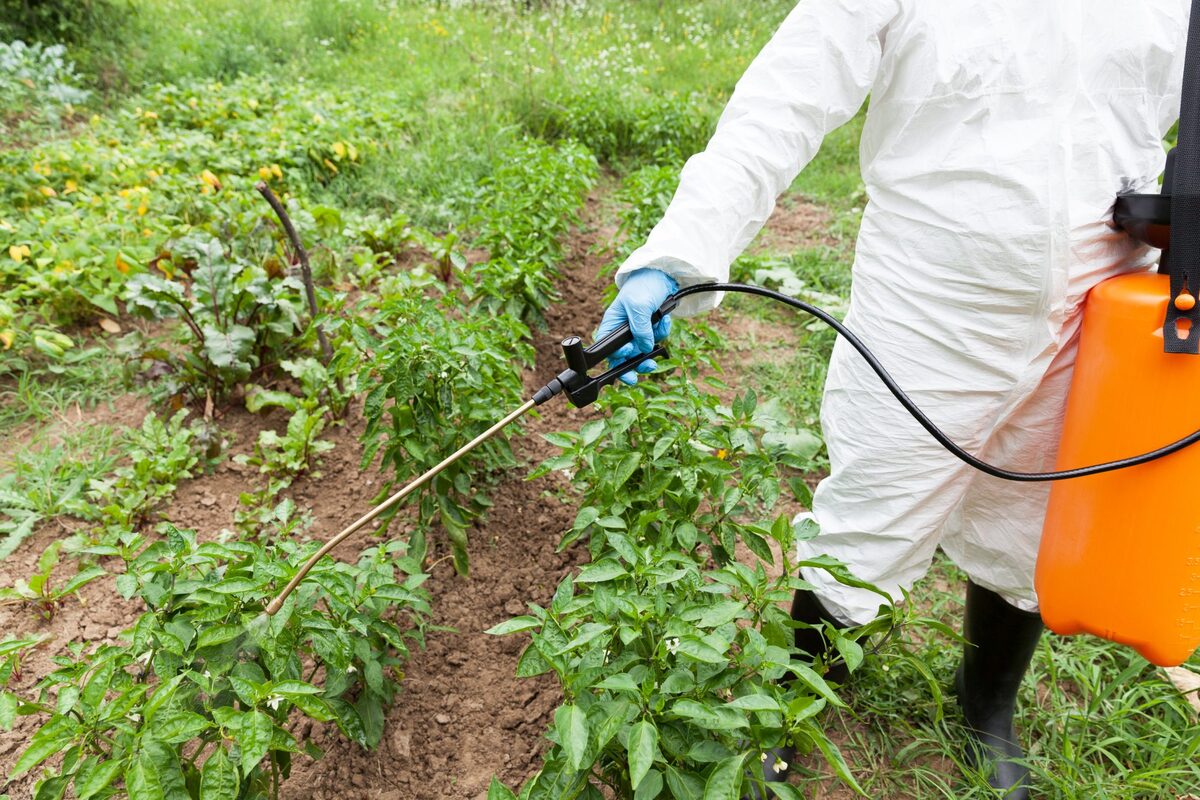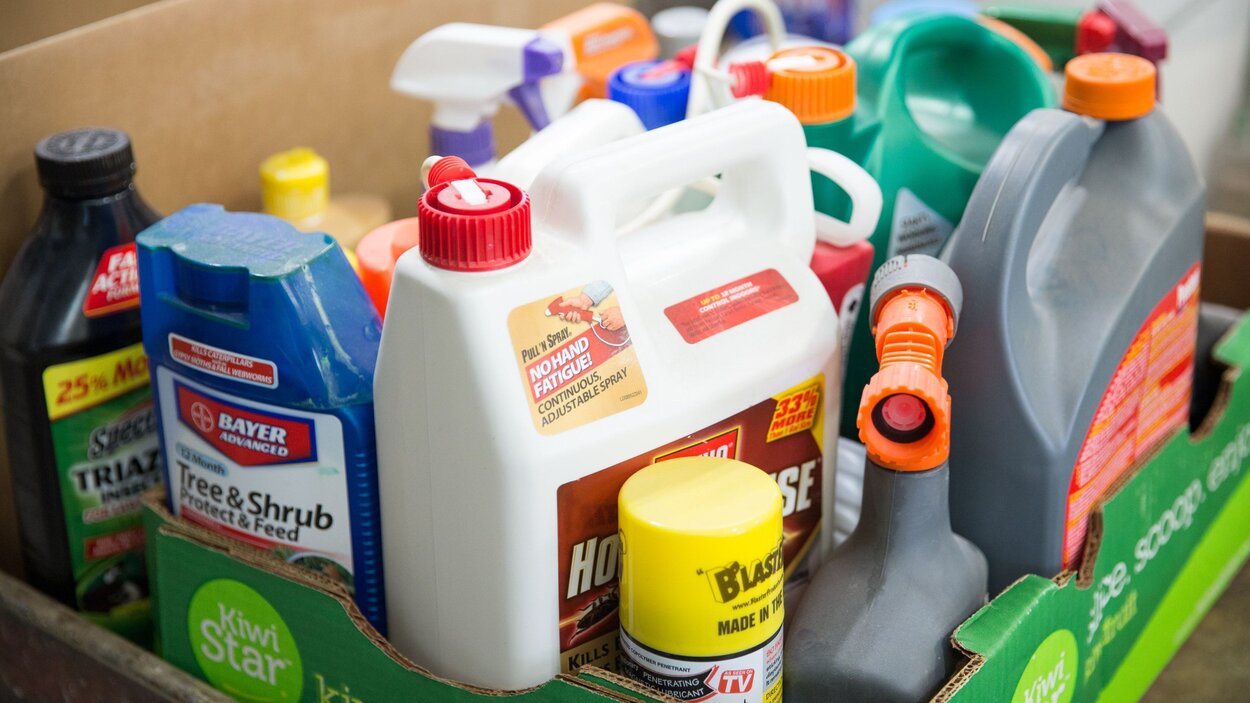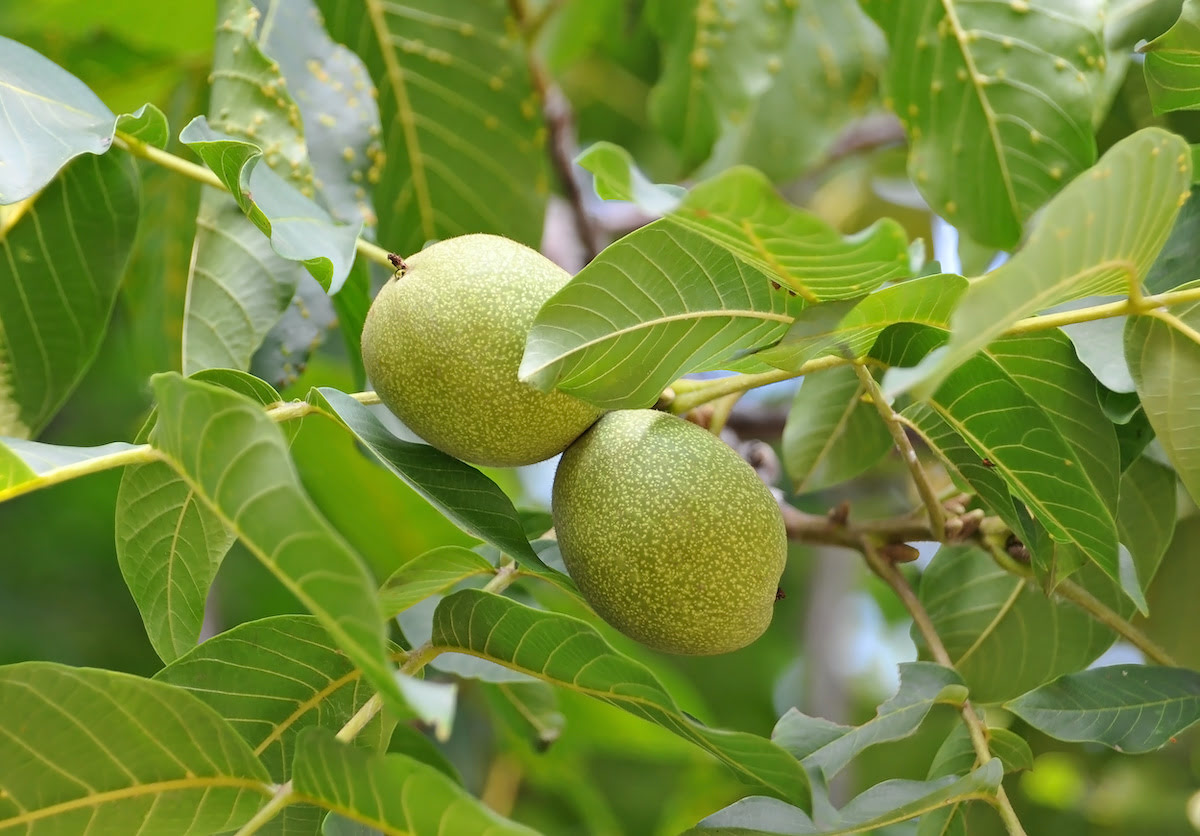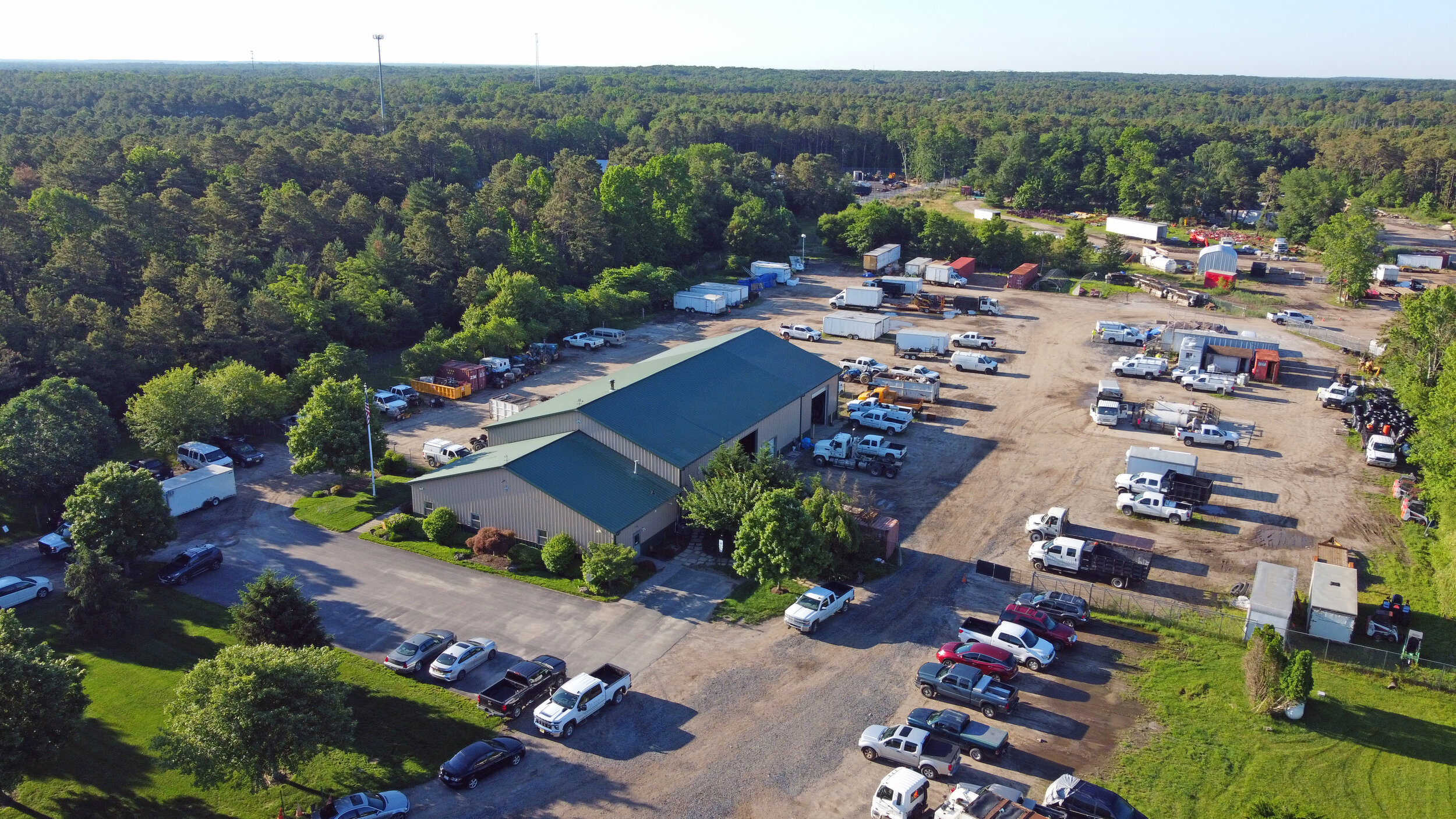Home>Gardening News and Trends>Latest News>The Who Recommended Classification Of Pesticides By Hazard 2013


Latest News
The Who Recommended Classification Of Pesticides By Hazard 2013
Published: November 25, 2023
Stay updated with the latest news on the WHO Recommended Classification of Pesticides by Hazard 2013. Learn about the classification and stay informed.
(Many of the links in this article redirect to a specific reviewed product. Your purchase of these products through affiliate links helps to generate commission for Chicagolandgardening.com, at no extra cost. Learn more)
Table of Contents
- Introduction
- Core Concepts of the WHO Recommended Classification
- Classifications by Hazard Categories
- Class I: Extremely Hazardous Pesticides
- Class II: Highly Hazardous Pesticides
- Class III: Moderately Hazardous Pesticides
- Class IV: Slightly Hazardous Pesticides
- Additional Considerations for Classification
- Conclusion
Introduction
Welcome to the world of pesticides and their classification! Pesticides play a crucial role in modern agriculture, helping to protect crops from destructive pests and maximize food production. However, it is essential to ensure that these chemicals are used safely and responsibly to mitigate potential risks to human health and the environment.
One of the most widely recognized and respected references for pesticide classification is the WHO Recommended Classification of Pesticides by Hazard. This classification system was first introduced in 1964 and has been periodically updated to reflect advances in scientific understanding and regulatory requirements.
The core objective of the WHO recommended classification is to categorize pesticides based on their inherent hazards, enabling regulators, farmers, and other stakeholders to make informed decisions about their use and to implement appropriate safety measures. It provides a standardized framework that helps ensure consistent assessment and communication of the risks associated with different pesticides.
The classification is primarily based on the acute toxicity of the pesticides, which refers to their potential to cause immediate harmful effects when ingested, inhaled, or absorbed through the skin. The system takes into account several factors such as LD50 (median lethal dose) and LC50 (median lethal concentration), as well as other relevant toxicological data.
The WHO recommended classification divides pesticides into four main hazard categories: Class I (extremely hazardous), Class II (highly hazardous), Class III (moderately hazardous), and Class IV (slightly hazardous). Each class represents a specific level of risk and requires different levels of precautionary measures to ensure safe handling and use.
It is important to note that the classification is not intended to evaluate the overall risk of a pesticide when used in real-world scenarios. Factors such as exposure level, route of exposure, and frequency of use all contribute to the actual risk faced by humans and the environment. Therefore, regulatory authorities and users must consider these additional factors when making decisions about pesticide use.
In the subsequent sections, we will delve deeper into each hazard category and explore the specific characteristics and implications of each class. We will also discuss some additional considerations that may impact the classification process. So, let’s dive in and discover the world of pesticide classification by hazard according to the WHO guidelines!
Core Concepts of the WHO Recommended Classification
The WHO Recommended Classification of Pesticides by Hazard is based on a few core concepts that provide a solid foundation for understanding the classification system. These concepts are essential for interpreting and applying the classification guidelines effectively.
1. Acute Toxicity: The primary focus of the classification is on the acute toxicity of pesticides, which refers to the adverse effects that occur shortly after exposure. Acute toxicity is typically measured using LD50 and LC50 values, which represent the dose or concentration at which 50% of test subjects experience lethal effects. The higher the LD50 or LC50 value, the less toxic the substance is considered to be.
2. Hazard Categories: The WHO classification system categorizes pesticides into four distinct hazard categories: Class I, Class II, Class III, and Class IV. These categories serve as guidelines for risk assessment and help determine the appropriate precautions and safety measures for each pesticide. The hazard categories are based on the acute toxicity of the pesticides and their potential to cause harm.
3. Precautionary Measures: Each hazard category corresponds to specific precautionary measures that should be taken when handling and using pesticides. These measures aim to minimize the risk of exposure and protect human health and the environment. For example, Class I pesticides, being extremely hazardous, require the highest level of precautionary measures, including the use of personal protective equipment (PPE) and restricted access to treated areas.
4. Risk Assessment: The classification system provides a standardized framework for assessing the hazard level of pesticides. However, it is essential to remember that the classification alone does not determine the overall risk. Factors such as exposure level, frequency of use, and route of exposure must also be considered when evaluating the potential impact of a pesticide on human health and the environment.
5. Regulatory Compliance: The WHO classification is widely accepted and used as a reference by regulatory bodies around the world. Regulatory compliance with the classification guidelines ensures that pesticides are appropriately labeled, and users are provided with relevant information on the potential risks and necessary safety precautions. It also helps regulatory authorities in setting standards and regulations for pesticide use.
Understanding these core concepts is crucial for interpreting the WHO recommended classification effectively. By considering these elements, stakeholders can make informed decisions about the safe handling, use, and regulation of pesticides.
Classifications by Hazard Categories
The WHO Recommended Classification of Pesticides by Hazard categorizes pesticides into four distinct hazard categories: Class I, Class II, Class III, and Class IV. Each category represents a different level of risk and requires corresponding precautionary measures to ensure safe handling and use.
1. Class I: Extremely Hazardous Pesticides
Class I pesticides are considered extremely hazardous and pose the highest level of risk. They have a high acute toxicity, with very low LD50 or LC50 values. These pesticides can cause severe health effects even with limited exposure. Class I pesticides require strict control measures, including specialized training for handling, use of appropriate personal protective equipment (PPE), and restricted access to treated areas. Their use is usually limited to highly trained professionals under tightly controlled conditions.
2. Class II: Highly Hazardous Pesticides
Class II pesticides are highly hazardous but relatively less toxic compared to Class I pesticides. They have moderate to high acute toxicity, with higher LD50 or LC50 values compared to Class I. Although they still pose a significant risk, they may require slightly less stringent control measures. Precautionary measures for Class II pesticides include training in safe handling practices, use of PPE, and restricted access in certain scenarios.
3. Class III: Moderately Hazardous Pesticides
Class III pesticides are considered moderately hazardous. They have low to moderate acute toxicity, with higher LD50 or LC50 values compared to Class II. While these pesticides still possess a certain level of risk, they are less toxic and less harmful than Class I and II pesticides. Precautions such as proper storage, use of appropriate PPE, and adherence to good agricultural practices are necessary when dealing with Class III pesticides.
4. Class IV: Slightly Hazardous Pesticides
Class IV pesticides are classified as slightly hazardous and have the lowest level of acute toxicity. They have low LD50 or LC50 values, indicating a low potential for harm. Although these pesticides are considered less hazardous, it is important to remember that they still require proper handling and use. Basic precautions, such as following label instructions and wearing minimal protective clothing, are recommended to ensure safe handling of Class IV pesticides.
It’s important to note that the classification is based solely on acute toxicity, and the actual risk to human health and the environment depends on various factors such as exposure level, route of exposure, and frequency of use. Therefore, it is crucial to consider these additional factors in the context of real-world scenarios when assessing the overall risk of pesticide use.
Understanding the hazard categories helps regulators, farmers, and other stakeholders make informed decisions about pesticide selection, use, and safety measures, ensuring the responsible management of pesticides and protecting human health and the environment.
Class I: Extremely Hazardous Pesticides
Class I pesticides are classified as extremely hazardous and pose the highest level of risk among all the categories under the WHO Recommended Classification of Pesticides by Hazard. These pesticides have a high acute toxicity, meaning that even a small amount of exposure can cause severe health effects.
What distinguishes Class I pesticides is their low LD50 or LC50 values, which indicate the dose or concentration at which 50% of test subjects experience lethal effects. It is crucial to handle and use these pesticides with extreme caution to minimize the risk to human health and the environment.
Due to their high toxicity, Class I pesticides require strict control measures and specialized handling. Professionals who handle these pesticides must undergo comprehensive training to ensure they understand the potential risks and know how to mitigate them effectively.
When using Class I pesticides, personal protective equipment (PPE), such as gloves, goggles, and respirators, is of utmost importance to protect against exposure. Proper storage and disposal practices are also essential to prevent accidental leaks or spills that could harm individuals or the environment.
Access to areas treated with Class I pesticides should be restricted to authorized personnel only. This helps minimize the risk of unintentional exposure to these hazardous chemicals. Clear warning signs and barriers must be in place to communicate the potential dangers associated with these pesticides.
Given the extreme hazards posed by Class I pesticides, regulatory authorities often impose additional requirements for their use. These may include licensing or permitting systems, stricter record-keeping obligations, and mandatory reporting of any incidents or adverse effects related to the use of these pesticides.
It is worth noting that the classification system is solely based on acute toxicity and does not evaluate the potential long-term effects or environmental impact of these pesticides. Therefore, it is essential to follow not only the classification guidelines but also other relevant regulations and guidelines to ensure the responsible and safe use of Class I pesticides.
By understanding the risks associated with Class I pesticides and implementing appropriate control measures, we can ensure that these highly hazardous chemicals are used responsibly to protect both human health and the environment.
Class II: Highly Hazardous Pesticides
Class II pesticides, categorized as highly hazardous by the WHO Recommended Classification of Pesticides by Hazard, pose a significant level of risk but are relatively less toxic compared to Class I pesticides. They have a moderate to high acute toxicity, meaning that they can cause harmful effects if not handled with care.
While Class II pesticides are less toxic than Class I, they still require stringent control measures to minimize the risks associated with their use. It is essential to have a thorough understanding of their potential hazards and to follow the recommended safety protocols.
Similar to Class I pesticides, individuals handling Class II pesticides should receive proper training to ensure they are aware of the potential risks and understand the necessary precautions. This training should cover topics such as correct handling techniques, storage procedures, and emergency response protocols.
Personal protective equipment (PPE) plays a crucial role in minimizing the risk of exposure to Class II pesticides. Gloves, goggles, and respirators should be worn when handling these chemicals to protect against skin contact, eye irritation, and inhalation of hazardous fumes or particles.
Access to areas treated with Class II pesticides should be restricted, particularly to untrained individuals or those who do not possess the required PPE. Appropriate signage and barriers should be in place to ensure that the potential risks are effectively communicated and access is controlled.
The proper storage and disposal of Class II pesticides are also important considerations. These chemicals should be stored in designated areas away from food, feed, and other potentially harmful substances. Disposal should be carried out following local regulations to prevent environmental contamination.
Regulatory authorities often impose specific requirements for the use of Class II pesticides, such as record-keeping obligations, usage restrictions, and application guidelines. Adhering to these regulations is essential to ensure responsible use and minimize the potential impact on human health and the environment.
While Class II pesticides are highly hazardous, it is important to note that the classification only reflects their acute toxicity. Factors such as exposure level, route of exposure, and frequency of use also contribute to the overall risk. This highlights the importance of conducting a comprehensive risk assessment when considering the use of these pesticides.
By following recommended safety protocols, implementing necessary control measures, and adhering to regulatory guidelines, the use of Class II pesticides can be managed safely and responsibly, protecting both human health and the environment.
Class III: Moderately Hazardous Pesticides
Class III pesticides, classified as moderately hazardous under the WHO Recommended Classification of Pesticides by Hazard, have a lower level of acute toxicity compared to Class I and Class II pesticides. They pose a moderate level of risk and require appropriate precautions to ensure safe handling and use.
Class III pesticides have a lower acute toxicity, meaning they have higher LD50 or LC50 values compared to Class I and Class II pesticides. While they still pose some level of risk, they are generally less harmful to human health and the environment.
Precautionary measures are still necessary when using Class III pesticides to minimize the potential risks. This includes ensuring proper storage and handling practices to prevent accidental spills or leaks. Adequate PPE, such as gloves and protective clothing, should be worn to protect against any potential exposure.
Appropriate training and education are essential for individuals handling Class III pesticides. They should be familiar with the potential hazards associated with these chemicals and know how to mitigate those risks effectively. Following label instructions and using the pesticides according to recommended guidelines are crucial for safe and effective use.
While Class III pesticides pose a lower level of acute toxicity, it is important to remember that the overall risk is influenced by various factors, such as the exposure level, route of exposure, and frequency of use. Therefore, it is essential to conduct a thorough risk assessment to determine the potential impact of these pesticides in real-world scenarios.
Regulatory authorities often provide guidelines and regulations specific to Class III pesticides. Complying with these regulations is crucial to ensure their responsible and safe use. Adequate record-keeping and reporting of any incidents or adverse effects related to the use of these pesticides should be followed.
By following proper safety protocols, implementing necessary precautions, and adhering to relevant regulations, it is possible to manage the risks associated with Class III pesticides. This will help protect both human health and the environment, ensuring the responsible use of these moderately hazardous chemicals.
Class IV: Slightly Hazardous Pesticides
Class IV pesticides, classified as slightly hazardous according to the WHO Recommended Classification of Pesticides by Hazard, have the lowest level of acute toxicity among the four hazard categories. While they still require proper handling and use, they pose a relatively lower risk compared to the higher hazard classes.
Class IV pesticides have low LD50 or LC50 values, indicating a low potential for harm. However, it is important to note that the classification is based on acute toxicity and does not evaluate the potential long-term effects or environmental impact of these pesticides.
Despite their lower level of toxicity, precautionary measures should still be taken when using Class IV pesticides. Following label instructions and recommended usage guidelines is essential to ensure their safe and effective application.
Basic protective clothing, such as gloves and minimal PPE, should be worn when handling Class IV pesticides. While the risks associated with these pesticides are relatively low, it is important to prevent any potential exposure to minimize the risk to human health.
Proper storage and disposal practices should also be followed for Class IV pesticides. These pesticides should be stored in designated areas away from other substances and disposed of according to local regulations to prevent environmental contamination.
While the potential risks associated with Class IV pesticides are relatively slight, it is still important to exercise caution and maintain proper management practices. Adhering to recommended safety protocols and applicable regulations can help ensure the responsible use of these slightly hazardous pesticides.
It is crucial to remember that the overall risk of pesticide use is influenced by factors such as the exposure level, frequency of use, and route of exposure. These factors should be considered alongside the hazard classification to assess the actual risk faced by individuals and the environment.
By maintaining awareness of the potential risks, following safety guidelines, and keeping up-to-date with regulatory requirements, Class IV pesticides can be used responsibly, minimizing any potential harm and safeguarding both human health and the environment.
Additional Considerations for Classification
While the WHO Recommended Classification of Pesticides by Hazard provides a valuable framework for categorizing pesticides based on their acute toxicity, there are additional factors that should be considered when assessing the overall risk associated with their use.
1. Chronic Effects: The classification system primarily focuses on acute toxicity, which refers to immediate harmful effects. However, some pesticides may pose long-term, chronic effects that can result from repeated exposure over extended periods. It is important to consider both the acute and chronic effects when evaluating the potential risks of pesticide use.
2. Environmental Impact: The classification system primarily addresses the risks to human health. However, it is crucial to consider the potential impact of pesticides on the environment, such as their persistence, potential to contaminate soil, water, and affect non-target organisms. Evaluating the environmental impact is vital for sustainable and responsible pesticide management.
3. Ecotoxicity: Pesticides can have adverse effects on ecosystems, including harm to beneficial insects, birds, and aquatic organisms. Assessing the ecotoxicity potential is important to understand the wider impact of pesticide use on biodiversity and ecological balance.
4. Residue Levels: The classification system does not directly consider residue levels found on food or in the environment. Regulatory authorities and organizations like the Codex Alimentarius establish maximum residue limits (MRLs) to ensure that pesticide residues in food are within safe levels. Compliance with MRLs is crucial to mitigate the risk of pesticide exposure through food consumption.
5. Modes of Action: Understanding the modes of action of pesticides can provide insights into their potential risks and help guide appropriate safety precautions. Different pesticides may act on specific biological processes and have varying mechanisms of toxicity that should be considered when evaluating their hazard and risk profiles.
Compliance with regulatory requirements, including registration, labeling, and usage restrictions, is essential for the responsible use of pesticides. Regular monitoring and evaluation of pesticide efficacy and adverse effects can further inform decision-making and contribute to ongoing improvements in classification and risk assessment frameworks.
Ultimately, the classification system provides a foundation for assessing and managing the risks associated with pesticide use. However, it is important to recognize that it is just one piece of the puzzle, and a comprehensive understanding of the potential risks, along with proactive risk mitigation measures, is crucial for ensuring the safe and sustainable use of pesticides.
Conclusion
The WHO Recommended Classification of Pesticides by Hazard serves as a vital tool for categorizing pesticides based on their acute toxicity and guiding the implementation of appropriate safety measures. The classification system provides a standardized framework that helps regulators, farmers, and other stakeholders make informed decisions about pesticide use while safeguarding human health and the environment.
By understanding the core concepts of the classification system, including acute toxicity, hazard categories, precautionary measures, risk assessment, and regulatory compliance, stakeholders can effectively navigate the world of pesticides and ensure their responsible management.
The four hazard categories, Class I to Class IV, provide a clear differentiation of risk levels associated with the use of different pesticides. Class I pesticides are extremely hazardous and require the most stringent control measures, while Class II pesticides are highly hazardous, Class III pesticides are moderately hazardous, and Class IV pesticides are slightly hazardous.
However, it is vital to remember that the classification system does not assess the overall risk of pesticide use comprehensively. Factors such as chronic effects, environmental impact, ecotoxicity, residue levels, and modes of action must also be considered when evaluating the potential risks and implementing appropriate risk mitigation strategies.
Responsible pesticide management involves compliance with regulatory requirements, proper training and education, the use of personal protective equipment, safe storage and disposal practices, and ongoing monitoring and evaluation. These measures help minimize the health risks to humans, protect biodiversity, and support sustainable agriculture practices.
Continued research and advancements in understanding pesticide toxicity, environmental impact, and risk assessment are essential to further refine and improve pesticide classification methods. This will contribute to the development of more comprehensive and robust guidelines for pesticide use in the future.
In conclusion, the WHO recommended classification system provides a valuable foundation for assessing and managing the risks associated with pesticide use. By adhering to the classification guidelines, considering additional relevant factors, and implementing appropriate safety measures, we can ensure the responsible use of pesticides and protect both human health and the environment.

